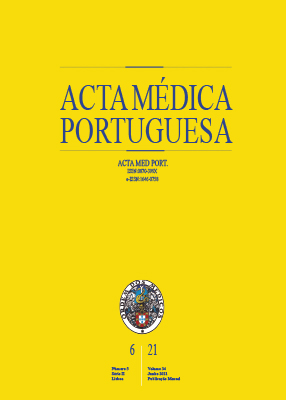Vestibular Disorders in the Pediatric Age: Retrospective Analysis and Review of the Literature
DOI:
https://doi.org/10.20344/amp.13147Keywords:
Benign Paroxysmal Positional Vertigo, Child, Migraine Disorders, Vertigo, Vestibular Diseases, Vestibular NeuritisAbstract
Introduction: Vestibular disorders in pediatric patients is still a controversial subject but has gained relevance over the years. In recent studies, its prevalence varied between 0.7% and 15%. Nevertheless, the true prevalence can be underestimated given that its clinical presentation is expressed compared to adults; it can present as rotatory vertigo, but It can also cause vision complaints, headaches, motor delay, and learning disability. Although middle ear effusion is considered the main cause of vestibular dysfunction in this age group, other diagnoses should be considered. The aim of this study was to describe clinical features of the pediatric population referred to a subspecialist Otorhinolaryngology vertigo clinic in a tertiary hospital between 2013 and 2017. We also aimed to compare the results and carry out a literature about the most common causes, diagnostic features and treatment approach.
Material and Methods: Clinical records of patients referred to a subspecialist Otorhinolaryngology vertigo clinic with suspicion of vestibular dysfunction aged between 0 and 18 years old were reviewed. Patients with middle ear effusion were excluded.
Results: Thirty-seven patients met the inclusion criteria. From these, 59% were female, with a mean age of 10.9 years old during the first consultation. The most common reason for referral was rotatory vertigo. Nausea and headache were also frequent complaints in our population. All patients performed audiometry; videonistagmography was performed in 41% of the cases; imaging studies were done in 59% of patients. The most common causes of vestibular dysfunction were vestibular migraine and benign paroxysmal vertigo of childhood (both in 27% of the cases), followed by vestibular neuritis (in 22% of the cases).
Discussion: Although our findings partially concur with the literature, compared with other specialist centers, the range of reasons for referral and of conditions is not as diverse, which may suggest that there is underdiagnosis of vestibular dysfunction in this age group.
Conclusion: Vestibular dysfunction in the pediatric age can have several causes; pediatricians, neurologists, physiatrists, family doctors and otorhinolaryngologists must be aware of the different forms of presentation. Referral and evaluation protocols addressing pediatric patients should be created.
Downloads
Downloads
Published
How to Cite
Issue
Section
License
Copyright (c) 2021 Acta Médica Portuguesa

This work is licensed under a Creative Commons Attribution-NonCommercial 4.0 International License.
All the articles published in the AMP are open access and comply with the requirements of funding agencies or academic institutions. The AMP is governed by the terms of the Creative Commons ‘Attribution – Non-Commercial Use - (CC-BY-NC)’ license, regarding the use by third parties.
It is the author’s responsibility to obtain approval for the reproduction of figures, tables, etc. from other publications.
Upon acceptance of an article for publication, the authors will be asked to complete the ICMJE “Copyright Liability and Copyright Sharing Statement “(http://www.actamedicaportuguesa.com/info/AMP-NormasPublicacao.pdf) and the “Declaration of Potential Conflicts of Interest” (http:// www.icmje.org/conflicts-of-interest). An e-mail will be sent to the corresponding author to acknowledge receipt of the manuscript.
After publication, the authors are authorised to make their articles available in repositories of their institutions of origin, as long as they always mention where they were published and according to the Creative Commons license.









